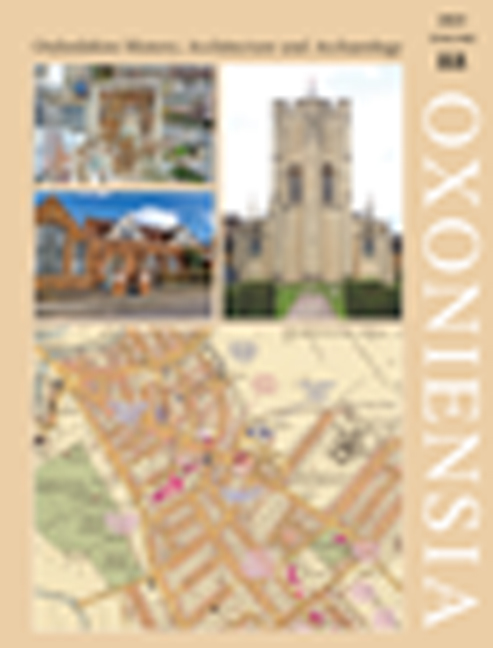Geoffrey Tyack, The Historic Heart of Oxford University
Published online by Cambridge University Press: 15 May 2024
Summary
The central idea of this book is an excellent one: to write a history of the university buildings in Oxford that cluster around Radcliffe Square and in the area to the north, from the University Church of St Mary on the High to the Weston Library on the Broad. Tyack describes the eight buildings that today occupy the site in eight readable, well-illustrated chapters. In so doing, he supplies an accessible history of the university and an up-to-date account of what Nicholas Hawksmoor called the Forum Universitatis. Tyack also explores the relationships between these buildings – their spatial, ceremonial and symbolic connections – and it is these relationships that make his book so stimulating and rewarding.
Tyack knows more about the architecture of Oxford than anyone else. But he is also a distinguished urban historian, and in the early pages of this publication he shows how the ‘Historic Heart’ of the university was grafted onto a grid-like plan of streets that was established in the early tenth century. He also shows how the university, even before it possessed buildings of its own, was clustered around the streets to the north of St Mary’s (Schools Street and Catte Street). Tyack reproduces H.E. Salter’s reconstruction of this area in the early fourteenth century, when its tight configuration of halls and houses was not significantly different from the rest of Oxford.
The subsequent transformation of this area is best followed in the bird’s-eye views of Ralph Agas (1578) and David Loggan (1675). These record the complete erasure of dense blocks of traditional housing and the erection of monumental public buildings in their place. (The recent transformation of Walton Street gives a sense of what it must have been like to live through change of this kind.) Colleges came first, with All Souls to the east of the University Church (founded 1438–43) and Brasenose to the north-west (founded 1509). But it was the central university that eventually made the primary impact.
Tyack shows how two particular factors influenced the ensemble north of the University Church. The first was the University Church itself and more specifically the rebuilding of the tower on the north side of the church in 1270; the shadow that this cast over the adjacent townscape would eventually determine the central axis of Radcliffe Square.
- Type
- Chapter
- Information
- Oxoniensia 88 , pp. 380 - 381Publisher: Boydell & BrewerFirst published in: 2024



